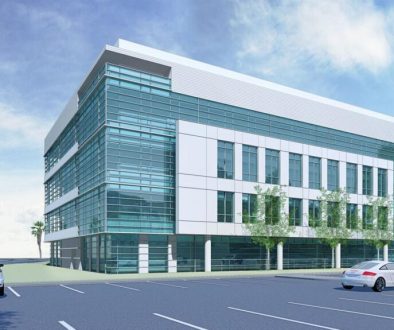Understanding Build-to-Suit Agreements in Commercial Leasing
Understanding Build-to-Suit Agreements in Commercial Leasing
Build-to-suit agreements represent a unique and flexible approach to commercial real estate leasing, allowing tenants to customize their space to meet specific business needs. This blog post delves deep into what build-to-suit agreements are, their advantages and disadvantages, key components, and the process involved in negotiating such agreements. Whether you’re a business owner considering a new facility or a landlord weighing options for prospective tenants, understanding these agreements is essential for informed decision-making.
Introduction
In the world of commercial leasing, businesses often face the challenge of finding spaces that fit their unique operational needs. Standard lease agreements might not always accommodate these specific requirements, leading to inefficiencies or compromises. This is where build-to-suit agreements come into play. Such agreements allow tenants to have a space designed and constructed specifically for their business operations, resulting in tailored environments that can enhance productivity and overall success.
This article aims to provide a comprehensive overview of build-to-suit agreements, exploring the benefits and challenges they present, the essential elements involved, and practical advice for both tenants and landlords. By the end, you’ll have a clear understanding of how these agreements function and what to consider when entering into a build-to-suit arrangement.
What is a Build-to-Suit Agreement?
A build-to-suit agreement is a type of commercial lease where the landlord agrees to construct a building or modify an existing one according to the specifications defined by the tenant. Unlike traditional leasing arrangements, where tenants might have to adapt to existing spaces, build-to-suit agreements offer a higher degree of customization. This flexibility is particularly beneficial for businesses with specific operational requirements, such as unique layouts for manufacturing, specialized conditions for healthcare services, or high-tech needs for data centers.
One notable advantage of a build-to-suit agreement is that it allows tenants to ensure that their space meets their brand identity and operational efficiency from the ground up. For instance, a restaurant might require specific kitchen configurations, while a retail store might need custom layouts for product displays. The landlord, on the other hand, can secure a long-term tenant committed to occupying the property once constructed, often resulting in more favorable lease terms.
Benefits of Build-to-Suit Agreements
The move towards build-to-suit agreements has gained traction in recent years, and for good reason. Here are several key benefits for both tenants and landlords:
- Customization: Tenants can work closely with architects and builders to create a space tailored to their needs, promoting productivity and efficiency.
- Long-Term Stability: Landlords often secure long-term leases with build-to-suit agreements, leading to more predictable cash flow and lower vacancy risk.
- Increased Value: A property constructed under a build-to-suit agreement is often more valuable than a standard commercial space because it is tailored to specific operational needs.
- Tax Incentives: Tenants may benefit from tax incentives related to improvements made to the property, depending on local laws and regulations.
- Brand Identity: A custom-built space can significantly enhance the branding and identity of a business, providing a unique customer experience.
For example, if a tech startup requires a collaborative space with open layouts, soundproof areas, and state-of-the-art technology setups, a build-to-suit agreement allows them to incorporate all these elements, thus fostering innovation and teamwork.
Challenges and Considerations
Despite the many benefits, build-to-suit agreements come with their own set of challenges. Here are some considerations to keep in mind:
- Higher Initial Costs: Building a customized space often requires a larger initial investment than leasing an existing property, which may deter some businesses.
- Longer Timelines: The construction process can take time, leading to potential delays in business operations. It’s crucial for tenants to plan for this timeline during the lease negotiation.
- Complex Negotiations: Negotiating the terms of a build-to-suit agreement can be more complicated than traditional leases, requiring thorough legal and financial due diligence.
- Market Conditions: Real estate market fluctuations can impact construction costs and timelines, leading to potential budget overruns or delays.
Landlords, on the other hand, must ensure they have the financial means to undertake construction projects and should perform due diligence on the tenant’s business viability to ensure that they are entering into a long-term, beneficial relationship.
Key Components of a Build-to-Suit Agreement
When drafting a build-to-suit agreement, several key components must be addressed to protect the interests of both parties:
- Specifications and Design: Clearly outline the requirements for the building, including architectural design, materials, and compliance with local zoning laws.
- Construction Timeline: Establish a detailed timeline for completion, including milestones for construction phases. This ensures transparency and accountability throughout the project.
- Costs and Payments: Define the total project cost, payment schedule, and who bears responsibility for cost overruns. Clear financial arrangements are crucial to prevent disputes later in the process.
- Lease Terms: Outline the duration of the lease, rental rates, and any options for renewal or purchase. Consider including escalation clauses to account for inflation.
- Responsibility for Maintenance: Specify who will be responsible for maintaining the property once construction is complete, which impacts ongoing operational costs.
- Termination Clauses: Clearly establish conditions under which either party can terminate the agreement and the associated repercussions.
For instance, a build-to-suit agreement for a specialized medical facility may require compliance with stringent healthcare regulations, necessitating careful coordination with local authorities and architects from the outset.
The Build-To-Suit Process: Step by Step
Navigating the build-to-suit process requires careful planning and coordination. Here’s a step-by-step guide to help you understand the essential stages involved:
- Initial Consultation: Engage with a real estate professional or broker who specializes in commercial leasing. Discuss your specific needs, budget, and location preferences.
- Site Selection: Identify potential sites that fit your requirements. Consider factors such as accessibility, local zoning laws, and proximity to your target customer base.
- Design Phase: Collaborate with architects and designers to develop detailed plans for the building based on your operational needs and brand identity.
- Financial Arrangements: Secure financing for the project, which may involve working with banks or investors. Ensure that all financial considerations are transparent and agreed upon.
- Construction: Once the plans are approved and financing is secured, commence the construction phase. Regular updates and communication between tenants and landlords are essential to keep the project on track.
- Final Inspection and Move-In: Conduct a final walkthrough of the building to ensure all specifications have been met. Once approved, prepare for the move-in process and start operations in the new space.
By following these steps, both tenants and landlords can minimize risks and ensure a smoother transition into a tailored commercial space.
Best Practices for Negotiating Build-to-Suit Agreements
Negotiating a build-to-suit agreement involves careful consideration of various factors to ensure a mutually beneficial arrangement. Here are some best practices to keep in mind:
- Thorough Research: Understand the local market conditions, including rental rates, demand for commercial properties, and construction costs. This knowledge will empower you during negotiations.
- Engage Professionals: Employ the expertise of commercial real estate brokers, lawyers, and contractors to guide you through the process and ensure that your interests are protected.
- Define Expectations: Clearly articulate your expectations and requirements upfront, minimizing ambiguity and potential misunderstandings later.
- Flexibility: Be open to compromises during negotiations. Flexibility can lead to a more amicable partnership and facilitate a smoother process.
- Document Everything: Ensure all agreements are documented, particularly any changes to the original agreement throughout the negotiation and construction phases.
- Future-Proofing: Consider future growth and scalability when designing the space. This foresight can save costs on future expansions or relocations.
Incorporating these best practices will help both parties create a successful and sustainable build-to-suit agreement.
Real-World Examples and Case Studies
Understanding the practical application of build-to-suit agreements can be better grasped through real-world examples. For instance, a large retail chain may enter into a build-to-suit agreement to establish a flagship store in a high-traffic area. The company works closely with the landlord to create a customized space that reflects its brand and operational needs, resulting in a unique shopping experience tailored to its customer base.
Another example involves a technology firm that requires specialized facilities for data storage and processing. By entering into a build-to-suit agreement, the tech company ensures that the infrastructure includes necessary security measures and advanced technology, setting them up for long-term success.
These examples illustrate how build-to-suit agreements can cater to specific industry needs while also providing landlords with long-term tenants committed to the property.
Conclusion
In conclusion, build-to-suit agreements offer a powerful solution for businesses seeking customized commercial spaces that align with their unique operational requirements. By understanding the benefits, challenges, key components, and negotiation strategies associated with these agreements, both tenants and landlords can make informed decisions that enhance their business prospects.
As the commercial real estate landscape continues to evolve, the demand for flexible, tailored solutions will likely persist. For businesses considering a build-to-suit arrangement, engaging with experienced professionals can facilitate a successful partnership and pave the way for operational excellence.
If you’re ready to explore your options for a build-to-suit agreement, contact us today! Whether you’re a tenant looking for the perfect space or a landlord interested in attracting long-term tenants, our expertise in commercial real estate can help guide your journey.



